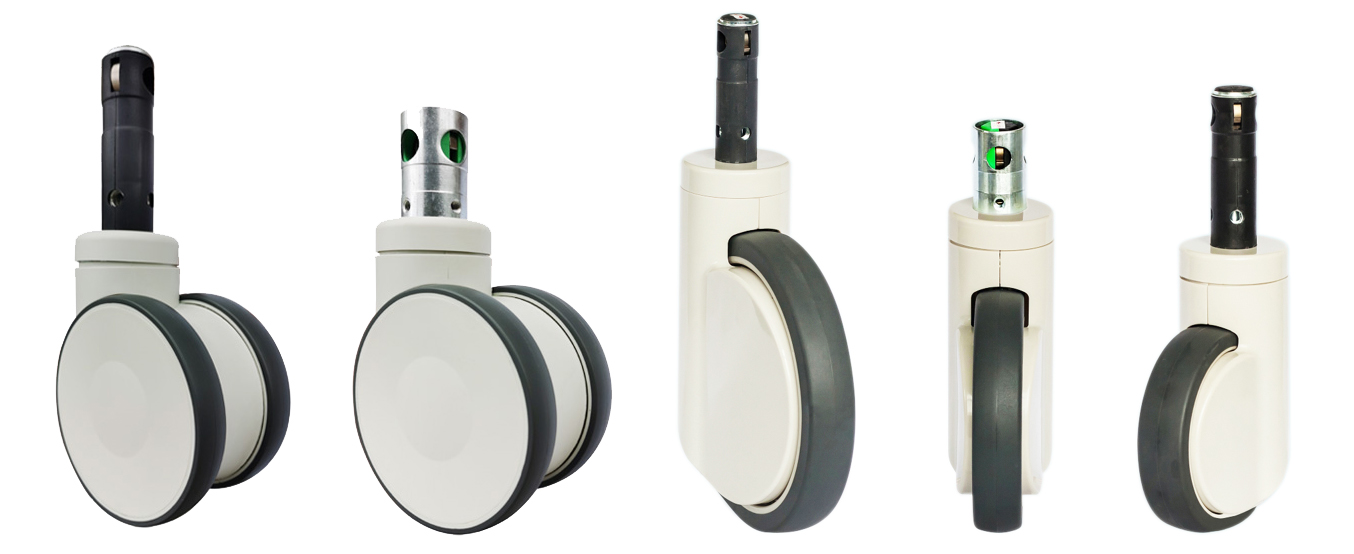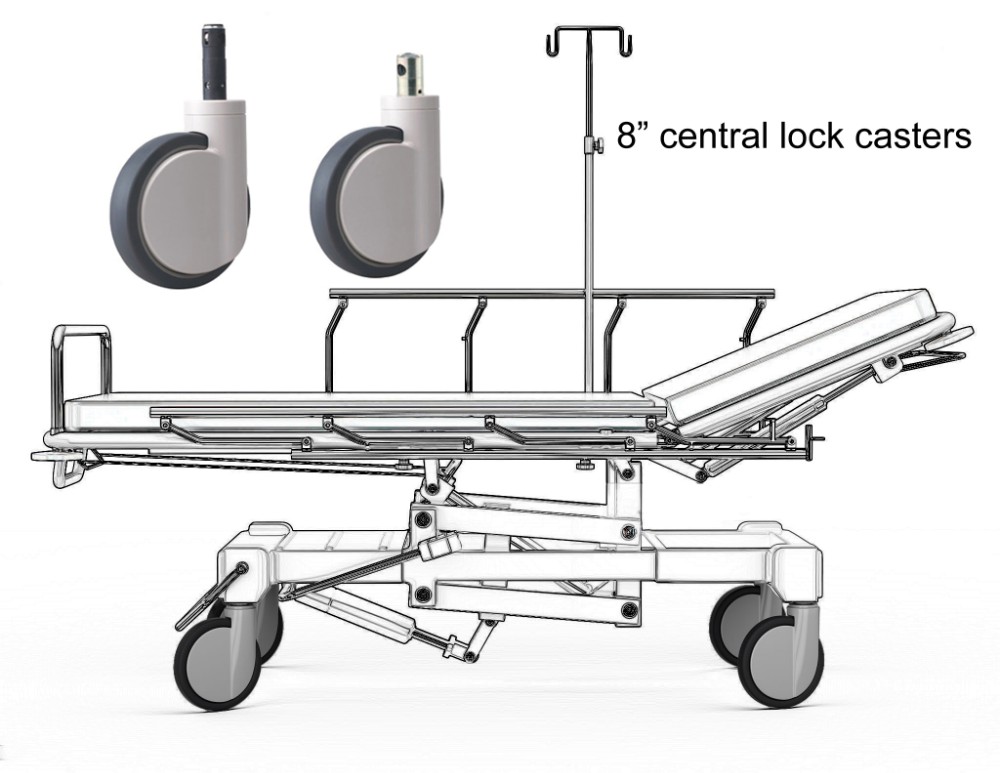Why hospital bed caster need impact resistant
Hospital bed casters are an essential component of healthcare equipment, providing mobility and maneuverability for patient beds. These casters are subjected to constant movement, weight-bearing, and impact from various sources. Therefore, it is crucial for hospital bed casters to be impact resistant. In this response, we will discuss the reasons why hospital bed casters need to possess impact resistance, exploring the importance of safety, durability, and functionality.
1. Patient Safety:
The primary reason for having impact-resistant casters on hospital beds is to ensure patient safety. Hospital environments can be hectic, with staff, patients, and equipment constantly moving around. Accidental collisions or impacts are not uncommon, and the casters need to withstand such incidents without compromising the bed's stability. Impact-resistant casters minimize the risk of sudden movements or bed displacement that could harm the patient. By maintaining stability and preventing unnecessary bed movements, these casters contribute to a safer patient experience.
2. Durability:
Hospital beds are designed for long-term use, often enduring heavy loads and frequent repositioning. Casters that lack impact resistance may break or malfunction when exposed to repeated collisions or heavy forces. This can result in costly repairs, downtime, and potential hazards for patients and healthcare workers. Impact-resistant casters, on the other hand, are built to withstand the demanding hospital environment, ensuring longevity and reducing maintenance requirements. They are made from robust materials and undergo rigorous testing to ensure they can handle the stresses associated with healthcare settings.
3. Smooth Maneuverability:
Hospital bed casters are responsible for enabling smooth and effortless movement of the bed. They need to navigate through corridors, around tight corners, and over different floor surfaces with ease. However, these movements can sometimes cause the casters to collide with walls, furniture, or other obstacles. Impact-resistant casters are designed to absorb shocks and distribute impact forces effectively, allowing the bed to continue moving smoothly without jerking or sudden stops. This ensures that patients can be transported comfortably and healthcare workers can maneuver beds safely, enhancing overall efficiency in hospitals.

4. Noise Reduction:
Hospital noise can be a significant source of stress for patients, hindering their recovery process. Casters without impact resistance may produce loud noises when they collide with objects or when the bed is being moved. This can disturb patients' rest and sleep, negatively impacting their healing progress. Impact-resistant casters are engineered to minimize noise generation by absorbing and dampening the vibrations caused by impacts. By reducing noise levels, these casters contribute to a quieter and more peaceful hospital environment, promoting better patient outcomes.
5. Protection of Hospital Infrastructure:
In addition to safeguarding patients, impact-resistant casters also protect hospital infrastructure. Hospital walls, door frames, and other equipment can suffer damage from frequent collisions with bed casters. This can lead to costly repairs and compromises the overall aesthetics of the healthcare facility. By utilizing impact-resistant casters, hospitals can minimize the risk of damaging their infrastructure, extending the lifespan of their facilities, and reducing maintenance expenses.
6. Compliance with Regulations and Standards:
Healthcare facilities must adhere to strict regulations and standards to ensure patient safety and quality care. Many regulatory bodies, such as the Joint Commission, outline specific guidelines for hospital equipment, including bed casters. These guidelines often emphasize the importance of using impact-resistant casters to prevent accidents and injuries. By incorporating impact-resistant casters into their bed designs, hospitals demonstrate compliance with these regulations, ensuring that they provide a safe and secure environment for patients.
In conclusion, the need for impact-resistant hospital bed casters on hospital beds stems from the crucial role they play in patient safety, durability, maneuverability, noise reduction, infrastructure protection, and regulatory compliance. These casters are designed to withstand the demanding and dynamic healthcare environment, enabling smooth and secure movement while minimizing the risk of accidents or damage. By prioritizing impact resistance, hospitals can ensure the well-being of their patients, enhance operational efficiency, and maintain a safe and sustainable healthcare facility.


 English
English Spanish
Spanish German
German Russian
Russian Arabic
Arabic Portuguese
Portuguese Italian
Italian French
French Hebrew
Hebrew Turkish
Turkish